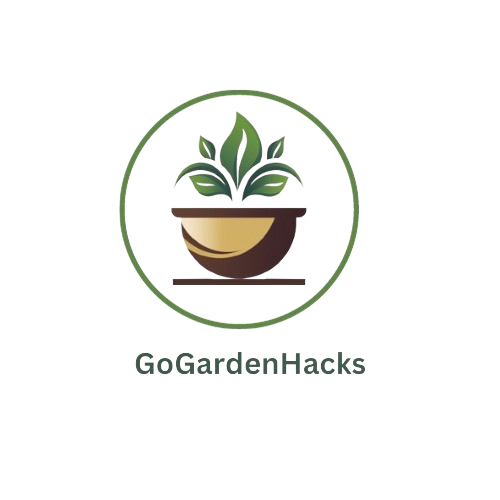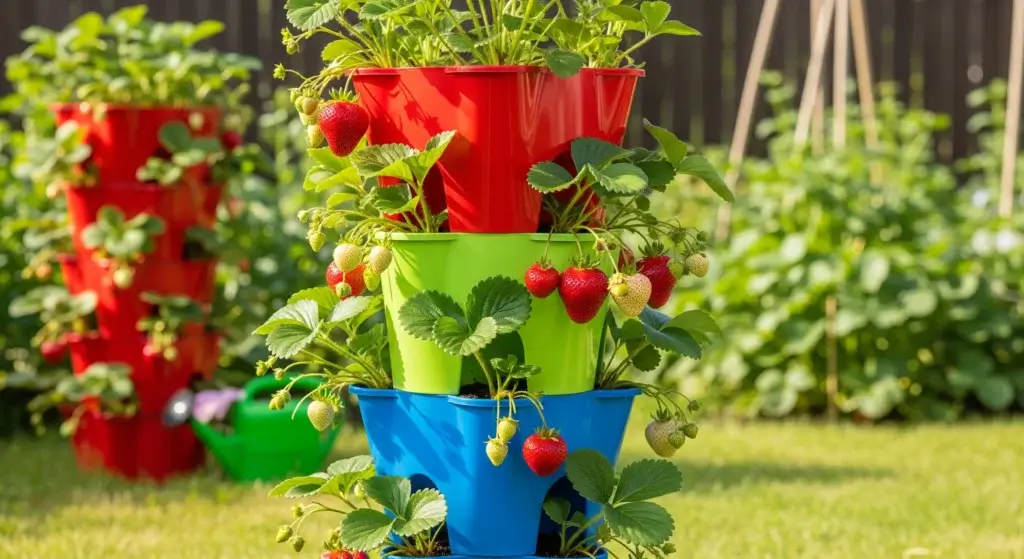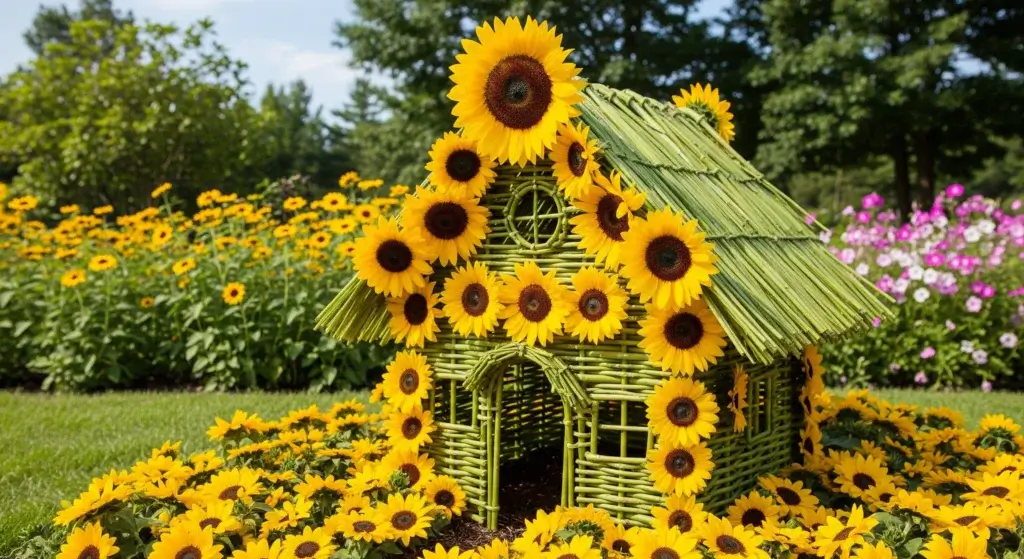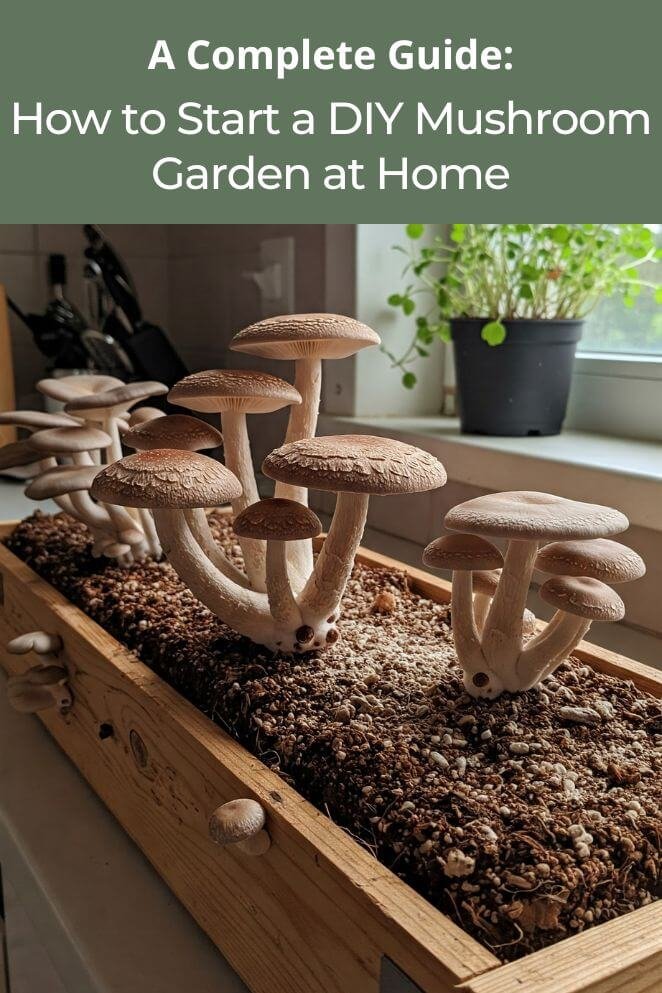
Mushrooms aren’t just fancy toppings for bougie pizzas anymore—they’ve gone full indie and are now starring in home gardens everywhere.
Growing your own mushrooms is eco-friendly, surprisingly easy, and weirdly satisfying (like sourdough, but less needy).
Whether you’re in a tiny apartment or have a backyard big enough to host a hobbit party, mushroom gardening can work for you.
This guide is your step-by-step cheat code to growing mushrooms indoors or outdoors—from picking the right fungi (no, not that kind) to harvesting your very first homegrown crop.
Spoiler: it’s easier than keeping a succulent alive.
Why Grow Mushrooms at Home?
Why grow mushrooms at home?
Because they’re like the introverts of the gardening world—quiet, low-maintenance, and wildly rewarding once you get to know them.
Here’s why these little fungi are the new green-thumb MVPs:
- Low drama, low light: Unlike sun-chasing tomatoes, mushrooms are cool with dark corners and don’t need much space.
- Trash to treasure: They grow on stuff you’d usually toss—coffee grounds, sawdust, cardboard. It’s like extreme composting meets gourmet farming.
- Nutrient powerhouses: These guys are loaded with B vitamins, antioxidants, and compounds that give your immune system a nice little pep talk.
- Wallet-friendly: A single kit or setup can give you multiple flushes (that’s mushroom-speak for “harvests”) for weeks or even months.
- Zen in a box: Gardening helps with stress, and mushrooms are part of the club. Think therapy, but cheaper—and edible.
What Types of Mushrooms Can You Grow at Home?
Start with beginner-friendly mushroom species that thrive in home environments:
Oyster mushrooms (Pleurotus spp.)
These are the overachievers. They grow fast, tolerate a bit of neglect, and come in fun colors like pink and gold.
Instagrammable and edible? Yes, please.
White button mushrooms (Agaricus bisporus)
The mushrooms you know from your pizza.
They love controlled indoor vibes—think mushroom spa day in a box.
Shiitake (Lentinula edodes)
The fancy ones with umami for days.
They take a bit more time and prefer hanging out on logs or sawdust blocks, but the flavor payoff is next level.
Lion’s mane (Hericium erinaceus)
The weird but wonderful puffball that looks like it belongs in a Final Fantasy game.
Tastes like seafood, boosts your brain and makes you feel like a wizard every time you check on it.

- Read also: Fresh Salads All Year Round: DIY Salad Bowl Garden Ideas
- Read also: Grow Fresh Herbs: Create Your Own DIY Hydroponic Herb Garden
Step-by-Step Guide: How to Start Your DIY Mushroom Garden
Starting a DIY mushroom garden is basically a mix of science project, fantasy novel, and homegrown snack all in one.
Whether you’re team Hobbit-hole or just looking to flex your indoor farming muscles, here’s a step-by-step guide to growing mushrooms with style—and without stress.
Step 1: Choose your growing method
Starter kit
These kits are the plug-and-play version of mushroom farming.
Pre-loaded with mushroom spawn and all the goodies.
Just spray with water and pretend you did everything yourself.
Perfect for beginners, busy bees, or anyone who’s ever killed a succulent.
DIY from scratch
You’ll need mushroom spores or spawn, a substrate (that’s mushroom soil, kinda), and a grow container.
Great for tinkerers, science nerds, and people who say “I just like the process.”
Step 2: Select a suitable growing environment
Mushrooms are picky little gremlins when it comes to their vibe:
- Humidity: 80–90% — They want it moist like a spa steam room.
- Temp: Usually between 55°F–75°F (depending on the species).
- Low light: Not pitch-black, but more “twilight vampire” than “beach day.”
- Fresh air: They like oxygen, not mold parties.
Top indoor spots:
- Under your sink (finally, a use!)
- Closet + humidifier = mushroom rave
- Basement shelves (the cool kind, not the haunted kind)
Outdoor options:
- A shady garden nook
- Greenhouses
- Wooden logs (shiitake’s luxury condo)
Step 3: Prepare Your Substrate
The substrate is the mushroom version of soil. Think of it as their dinner and bed.
Each species has a favorite:
| Mushroom Type |
Preferred Substrate
|
| Oyster |
Coffee grounds, straw
|
| Shiitake |
Hardwood sawdust or logs
|
| Button |
Compost or manure mix
|
| Lion’s Mane |
Sawdust, cardboard
|
IMPORTANT:
Sterilize or pasteurize it—because mushrooms hate roommates like bacteria and mold.
Step 4: Inoculate with spawn
Spawn = mushroom roots on training wheels.
- Mix it evenly into your sterilized substrate.
- Pack it all into a tub, bag, or grow tray.
- Stick it somewhere dark and cozy for 2–4 weeks.
Watch for a white, fuzzy network spreading—this is mycelium, the mushroom’s brainy underground network.
Kinda like The Matrix, but edible.
Step 5: Trigger fruiting conditions
Time to wake up the mushrooms!
- Drop the temp a few degrees.
- Crank the humidity up with misting or a humidity tent (basically a tiny mushroom spa).
- Give ‘em a few hours of soft, indirect light.
Then, BOOM—baby mushrooms (called pins) start to pop like popcorn.
Step 6: Harvest and enjoy
- Cut (don’t yank!) the mushrooms at the base with a sharp knife when their caps look just right—flat but not floppy.
- Store in the fridge (if they even make it that far without getting eaten).
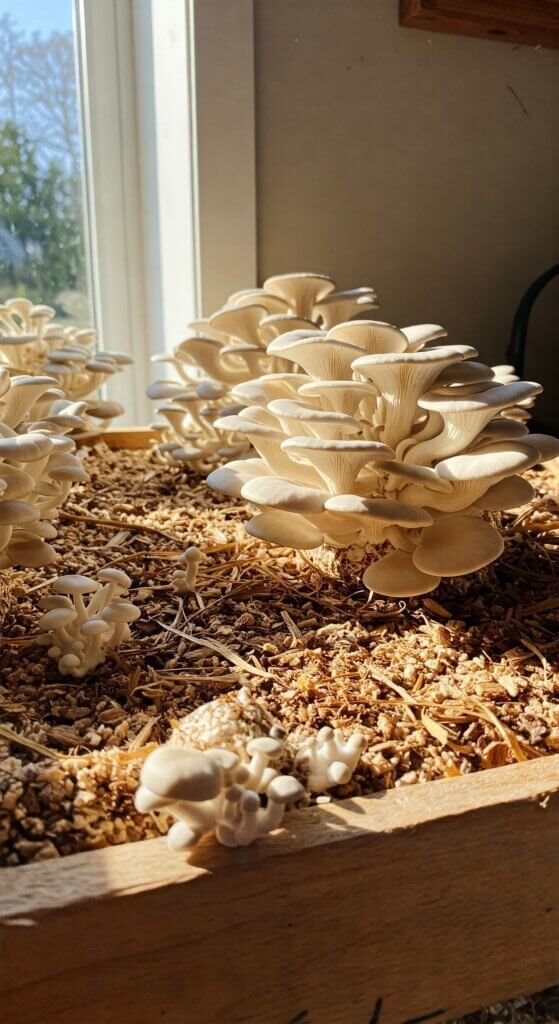
Common Mushroom Rookie Mistakes to Avoid
Even though growing mushrooms isn’t rocket science, it’s still easy to trip up if you treat them like regular plants.
Mushrooms have main-character energy—and they’re not shy about telling you when something’s off.
Mistake #1: Too much or too little water
Too much water = mold party. Too little = dry, grumpy mushrooms that refuse to grow.
Fix: Mist lightly, like you’re giving your pet cactus a spa day—not reenacting a rainforest scene from Avatar.
Mistake #2: Poor air circulation
Mushrooms love fresh air, not musty closet vibes. Without ventilation, you’re basically turning their grow space into a haunted house for mold.
Fix: Crack a window or let a tiny fan do a Beyoncé hair-blow moment now and then.
Mistake #3: Wrong substrate = Hangry mushrooms
Oysters don’t want compost. Shiitakes don’t vibe with coffee grounds. Giving the wrong “mushroom food” is like feeding steak to a vegan.
Fix: Match your substrate to your species like it’s a Tinder profile. Swipe right on straw for oysters, logs for shiitake, etc.
Mistake #4: Skipping the sterilization step
If you don’t clean your substrate, bacteria and mold will move in like the bad roommates from every sitcom ever.
Fix: Heat it, steam it, boil it—just make sure it’s germ-free before adding spawn.
Tips for Successful Mushroom Gardening
Want that sweet, sweet flush of shrooms?
Keep these pro-tips in your toolbelt:
Label each batch
Write the date you inoculated and when you expect fruiting.
Trust us—future you will thank past you when you’re juggling three species like a mushroom DJ.
Use a hygrometer
This gadget tells you how humid your grow zone is.
Mushrooms love it sticky—but not sweaty. Think rainforest, not gym locker room.
Recycle the substrate
Once your batch is done, don’t toss it. Toss it into your garden compost instead.
It’s still full of nutrients and makes your tomatoes grow like they’ve been hitting the gym.
Join online forums
Hop into online communities like Reddit’s r/mycology or mushroom Discords.
These folks have seen it all: mold disasters, alien-looking flushes, even fungi cosplay.
Bonus: You’ll never feel weird talking about “mycelium progress” again.

Benefits of Growing Your Own Mushrooms
Home mushroom growing isn’t just a quirky hobby for plant nerds and TikTok gardeners—it’s a legit life upgrade.
Here’s why growing your own shrooms is basically a power move:
Fresh and organic produce
You get mushrooms fresher than anything in the store—no pesticides, no weird waxy coatings, and definitely no “what-is-this-even” preservatives.
Think farm-to-table, but the farm is under your sink.
Sustainable living
Instead of tossing out those daily coffee grounds or cardboard boxes from your Amazon addiction, feed them to your mushrooms.
They turn trash into gourmet treasure like some kind of eco-friendly sorcery.
It’s like Captain Planet meets The Great British Bake Off—but with fungi.
Educational opportunities
Want to teach kids (or curious adults) how nature really works? Growing mushrooms is like running a live science lab.
You’ll learn about ecosystems, decomposition, and how mycelium is basically the underground internet of the forest.
Home-based business potential
Start with a hobby, end up with a booth at your local farmer’s market selling golden oysters and lion’s mane like a backyard mushroom mogul.
It’s a slippery slope from “just growing for fun” to “hand-labeling jars like a hipster apothecary.”
- Read also: Spudtacular Sprouts: Build Your Own DIY Potato Tower Planter
- Read also: A Step-by-Step Guide: Create Your Own DIY Cucumber Planter
Conclusion: Growing Gourmet from Home
Starting your own DIY mushroom setup at home is way easier than trying to keep a fiddle-leaf fig alive—and honestly, way more delicious.
Whether you’re in it for the crunchy eco-points, gourmet bragging rights, or just want a cool science experiment that feeds you, mushroom gardening delivers.
So grab your spores, channel your inner Last of Us (minus the apocalypse), and start growing some edible magic. Your future self—chef hat on, sauté pan sizzling—will thank you.
